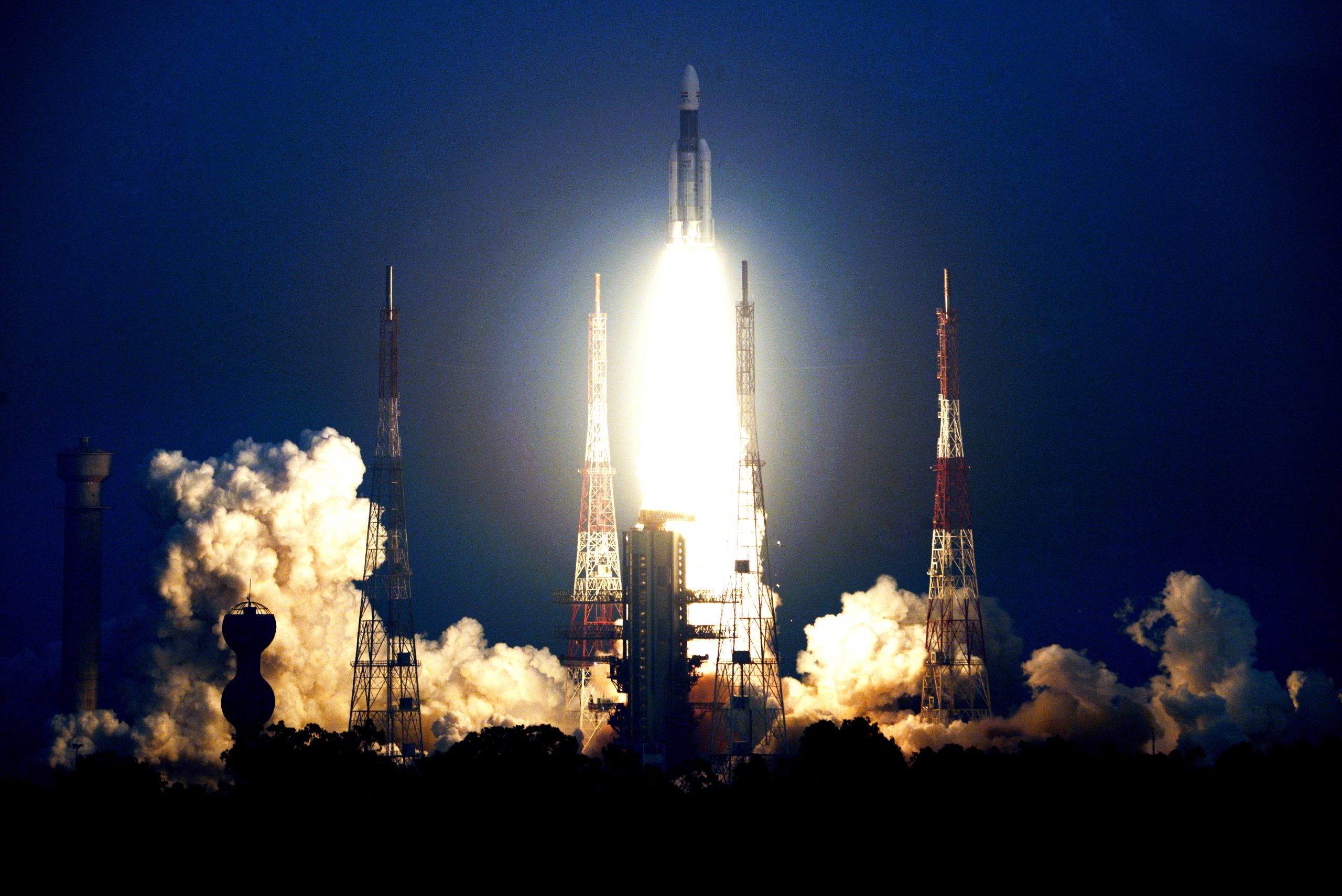The Indian Space Research Organization (ISRO) has been at the forefront of space exploration in India. It has had many successful projects and has made India proud on several occasions. ISRO GSLV Mk III is also one such project. The Geosynchronous Satellite Launch Vehicle Mark 3 is also known, simply, as the LMV3 or Launch Vehicle Mark 3. It is developed with a view to having a launch vehicle for medium lifts. The main intent for developing it was to have a launch vehicle that can easily launch satellites to the geostationary orbit. It is one of the most important programs that come with the Indian Human Spaceflight Program. Its predecessor GSLV had a slightly lesser capacity than this one. It has a total of three successful launches with no failures so far.

SOURCE ISRO
Story Behind The Conceptualization Of ISRO GSLV Mk III
The first launch on the GSLV Mk III was conducted on June 5, 2017, after a series of delays. It was done at the Satish Dhawan Space Center that is located in the state of Andhra Pradesh. Its development started in the early months of 2000 after the design was approved by ISRO. In the beginning, the plan was to have two different launchers – one for the larger ones for payloads that need to be sent to the Geostationary Transfer Orbit (GTO) through the Geosynchronous Satellite Launch Vehicle and the other one for Polar orbit in the low Earth orbit through the Polar Satellite Launch Vehicle. However, in the end, this plan was reconceptualized, and they decide to build a stronger launch vehicle. This is how GSLV Mk III came into existence.
The Design Of GSLV Mk III
The design of GSLV Mk III is something that makes it so much more powerful than its predecessors. It has two Large Solid Boosters (LSB) called the S200 solid motors that are attached to its core. The height of each booster is 25 meters, and the width is 3.2 meters. It can carry a weight of 207 metric tons of propellant. It can be counted as the largest booster for solid fuel after the Ariane 5 SRBs and Space Shuttle SRBs. This is the first stage.
Now, the second stage has an L110 designated which is the stage of liquid fuel and has a width of 4 meters and a height of 21 meters. It has a capacity of 110 metric tons of Nitrogen Tetroxide and unsymmetrical dimethylhydrazine. Two of the Vikas 2 engines give power to it. Each of them produces 755 kilonewtons thrust and gives out 1532 kilonewtons of total thrust. In short, the Vikas engine individually gimbals for the roll control, yaw and the control of the vehicle pitch.
Important Missions Of GSLV Mk III
The first mission of the GSLV Mk III that took its orbital flight took place on June 5, 2017. It carried D1 (GSAT-19) which is a communication satellite and was the heaviest payload that was ever launched by ISRO. It was a successful mission, and the satellite was perfectly placed into the GTO at a distance of 170 kilometers. Some other successful missions apart from D1 include D2 and X. There are more launches planned in the coming years.
Final Words
Overall, GSLV Mk III is one of the biggest achievements of ISRO and has lead to some important breakthroughs. Being the first vehicle launcher for heavyweight satellites, it has taken the space programs of India to the next level. It has also laid the foundation for some future developments and upgradations of spacecraft designed by ISRO.





